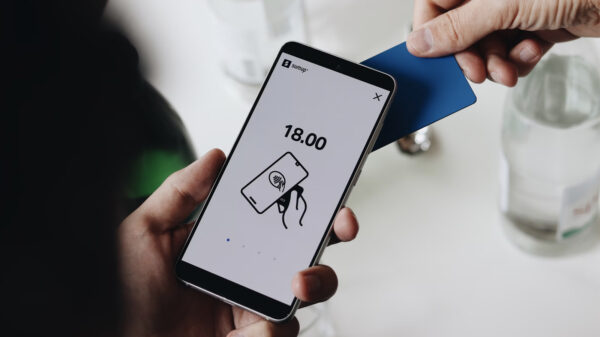The coronavirus disease (COVID-19) pandemic has changed the way consumers boosted the country’s fast-growing e-commerce industry. While activities during the pandemic have been strictly limited to protect health and contain the spread of the virus, and businesses were forced to close, unable to sell goods and services due to lockdowns, e-commerce came to the rescue, serving people through online services such as online shopping, delivery, telehealth, entertainment, digital payments and other digital services that increase e-commerce adoption in the country.
E-COMMERCE ADOPTION
E-commerce adoption in the Philippines accelerated during the pandemic. The 2020 e-Conomy SEA Report showed that 40 million new users came online in 2020 across the region. Given the extensive COVID-19 lockdown in the Philippines, users went online searching for solutions to one of their sudden challenges, one of which is to purchase their needs online. E-commerce usage has surged in 2020 and has driven significant growth of 55% in the Philippines. The report also showed that Philippine e-commerce market was at $4-billion in 2020 and it will grow up to $15-billion by 2025. Overall, the internet industry is foreseen to remain resilient, and Southeast Asia’s digital economy is set to reach US$300-billion in value by 2025.
As more shoppers started to buy online than they usually do due to lockdown, the number of online sellers also increased. Data from the Department of Trade and Industry (DTI) showed a growth in the number of online sellers that registered their business names last year. From January to March 2020, the number of online businesses ballooned to around 88,000 by the end of the year. In addition, for the month of January 2021, online business registration has already hit 93,318.
CONSUMER SHOPPING BEHAVIORS
New consumer shopping behaviors emerged in the Philippines during the pandemic. More Filipinos are using e-Commerce for the first time to make purchases from large online marketplaces as well as from home-based online businesses during the pandemic which leads to increased e-Commerce activity and usage in home delivery services.
According to the VISA Consumer Payment Attitudes Study which was conducted last year, 52% or one in two Filipinos shopped online through apps and websites for the first time due to the pandemic and 43% of them made their first online purchase using social media channels.
For those who are already actively shopping, close to nine in 10 Filipinos have increased their online shopping activities in websites or apps, while seven in 10 are shopping more on social media channels. During the pandemic, more than half or 53% of consumers are doing their shopping at large online marketplaces and 61% are buying at online home-based businesses, while 34% believe that shopping at online marketplaces will become a new habit for the pandemic.
The study also noted that whether shopping on online marketplaces or social media channels, there is a logistics or delivery needs on how Filipino consumers are receiving their purchases. The increase in online consumption due to lockdowns or movement restriction orders was the reason for the surge in home delivery usage. About 93% of Filipino shoppers use home delivery services in getting their goods while 67% increase their usage of home delivery services during the pandemic.
DIGITAL PAYMENT ADOPTION
New shopping preferences also came out during the pandemic which may become future shopping habits. As digital payment adoption grows due to the acceleration of e-commerce activities, there is a reduction in the use of cash. VISA study respondents comprising 53% say they carry less cash in their wallet. The study disclosed that cash usage was reduced as five out of 10 payments were made using cash, from more than seven out of 10 during the pre-pandemic period. The reasons for the drop in cash usage were as follows: 73% of respondents use more contactless payments including mobile wallets; 54% say cash is unsafe from potential spread of infection; 50% believe there is now a wider acceptance of cashless payment; while 43% say carrying cash is unsafe.
When asked about what categories can be completely cashless, Filipino respondents say bills payment (81%); grocery shopping (71%); and overseas travel (68%).
The use of contactless payment among current users increases by 66% during the pandemic while 88% of respondents are interested to try out contactless payment method. They will benefit from the use of contactless payments as 88% of Filipino respondents say there’s no need to carry cash, 75% say it is safe from infection, while 68% have innovative payment method.
As digital payments take on a greater significance in the lives of Filipinos, shopping destination Shopee will come up with a wide range of attractive benefits, incentives, and promotions when they pay with ShopeePay that will make payments seamless, safer and more worthwhile for its users. Bills payment can be maximized with Shopee Coins and ShopeePay-exclusive vouchers on the Shopee app while users can pay for their cash-on delivery orders by scanning the Shopee Xpress delivery rider’s QR code.
PRODUCT BUYING HABITS
According to Martin Yu, director at Shopee Philippines, consumption online habits on the following product segments also changed significantly during the pandemic and observed the following trends:
Demand for healthcare products increased last year, with masks and sanitizers especially popular among shoppers in SEA. Face masks contributed the majority of total items sold in the Philippines since health was the topmost priority among Filipinos to prevent the spread of COVID-19. There was also a surge in the demand for skincare products in December 2020 as people focused more on self-care and skincare, with over 800,000 skincare products such as Korean face masks, jade rollers, moisturizers, and serums sold.
There was also a significant changes in the food and grocery market as Filipinos became more “online first” for food products. Shopee has observed a 2.5 times increase in users who buy food products multiple times a month, which shows Filipinos are shifting a larger share of food and grocery shopping online to reap the convenience of e-commerce.
In electronics segment, shoppers bought more gadgets for their work-from-home setups and gaming must-haves. Filipino shoppers were particularly drawn to Bluetooth earphones in 2020 to seek better audio experiences as they continue to work, study, and exercise at home.
Filipinos shopped at Shopee to spruce up their homes, as observed in its 4.4 Mega Shopping Day Sale. Storage boxes and 3D wallpapers became best-selling items since shoppers bought more home décor and organizers for spring cleaning and refurbishing.
The pandemic also increased the online demand for Home & Living, Food and Beverages, and Fashion categories in the Philippines.
“The upward trend in online shopping is set to continue as more people become more reliant on e-commerce for their everyday needs,” Yu said, adding that ”as consumer habits continue to change in this new normal, Shopee will continually refine our campaigns and features to offer more customized and personalized shopping experiences to fit customers’ needs.”
CHALLENGES
During the early days of the lockdown, e-commerce platform Shopee experienced two main challenges which include the delays in the shipment of overseas orders from China due to the outbreak of COVID-19, and high demand for hygiene and sanitation products such as face masks, rubbing alcohol, and sanitizers which were observed to have a steady increase since the start of 2020 due to the Taal eruption and COVID-19 outbreak. These challenges were addressed through proper protocols and communications to affected buyers and sellers.
E-commerce platform proved to be a success during the pandemic as online players widen their market penetration. It does not only bring convenience in purchasing goods and services, it has become part of Filipinos’ daily lives.
“We saw more Filipinos turning to e-commerce to meet their everyday needs as people live, work, and play from home. In fact, Shopee saw a three times increase in sellers onboarding our platform in June 2020 compared to March 2020. Orders from our active sellers also grew 30 times during the same period,” Yu said.
The success of Shopee’s major campaigns in 2020 such as the 9.9 Super Shopping Day, 11.11 Big Sale, and the 12.12 reflected the continued growth in e-commerce in the region and the many opportunities it presents for businesses and shoppers.
SHOPEE’S COMMITMENT
Shopee has a firm commitment to helping brands and entrepreneurs succeed in e-commerce. The platform helps brands reach their customers and capture more growth. There are now over 25,000 brands on Shopee Mall across the region, growing 4.5 times since 2017, while orders have grown 10 times. It also helps local businesses start, scale, and succeed online.
Shopee continues to innovate and adapt to the needs of their users. Its in-app social feed allows users and sellers to share content on what they list, buy and sell. Its live streaming feature has enabled brands and sellers to better reach and engage its users, while its in-app chat feature allows buyers to talk to sellers directly and find out more information before and after purchasing. It also rolls out new in-app games such as Shopee Shake and Shopee Farm.
Shopee works closely with sellers to provide support in minimizing disruptions in shipments. Sellers were provided customer service assistance and inventory management guidelines to ensure that they have sufficient supply to cater to their user’s needs. It is also looking to roll out fresh and engaging content and experiences for its users through exclusive partnerships and innovative brand experiences.
“We want e-commerce to be accessible to everyone in the region, where there is a largely untapped opportunity. We are fortunate to be in a strong position to create unique experiences for users and help more businesses go digital,” said Yu.
Changes have also been made in the workforce as a result of the pandemic. At the onset of the pandemic, Shopee shifted to a remote setup to ensure its employees’ well being and in order to continue its services remotely, unaffected. Skeletal work arrangement was observed where only a minimum number of employees are present to ensure social distancing. Stringent measures were taken to protect its staff and warehouses like daily disinfection, stringent body and temperature checking, hand sanitizing when handling parcels, and strict rules in wearing masks and face shields when entering the building.























































































































